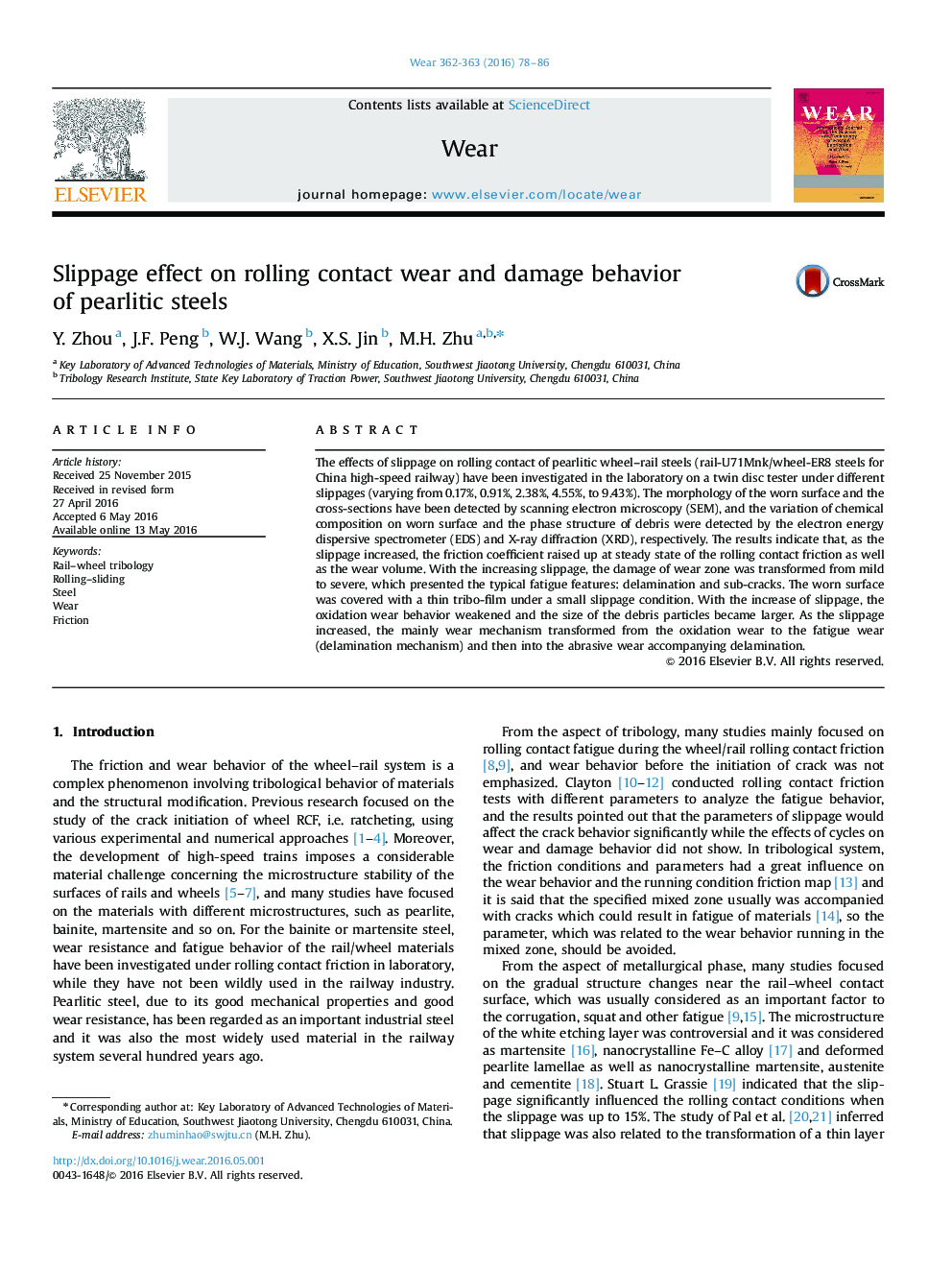| Article ID | Journal | Published Year | Pages | File Type |
|---|---|---|---|---|
| 616857 | Wear | 2016 | 9 Pages |
•Effect of slippage on microstructure is more severe than other parameters.•Initiation of cracks occurred at a certain range of slippage.•Oxidation wear weakens when the slippage increases.•Different wear mechanisms correspond to the varied slippages.
The effects of slippage on rolling contact of pearlitic wheel–rail steels (rail-U71Mnk/wheel-ER8 steels for China high-speed railway) have been investigated in the laboratory on a twin disc tester under different slippages (varying from 0.17%, 0.91%, 2.38%, 4.55%, to 9.43%). The morphology of the worn surface and the cross-sections have been detected by scanning electron microscopy (SEM), and the variation of chemical composition on worn surface and the phase structure of debris were detected by the electron energy dispersive spectrometer (EDS) and X-ray diffraction (XRD), respectively. The results indicate that, as the slippage increased, the friction coefficient raised up at steady state of the rolling contact friction as well as the wear volume. With the increasing slippage, the damage of wear zone was transformed from mild to severe, which presented the typical fatigue features: delamination and sub-cracks. The worn surface was covered with a thin tribo-film under a small slippage condition. With the increase of slippage, the oxidation wear behavior weakened and the size of the debris particles became larger. As the slippage increased, the mainly wear mechanism transformed from the oxidation wear to the fatigue wear (delamination mechanism) and then into the abrasive wear accompanying delamination.
